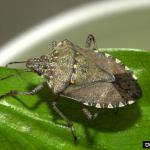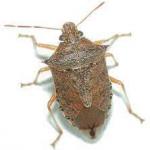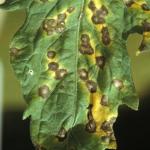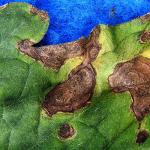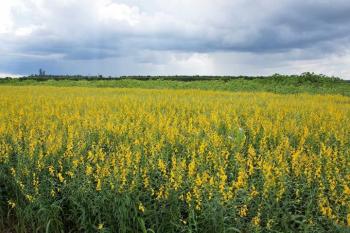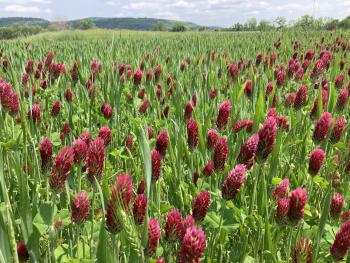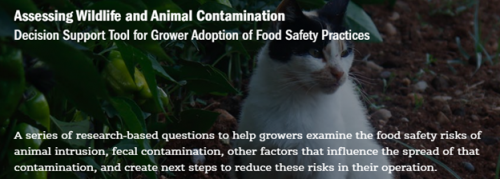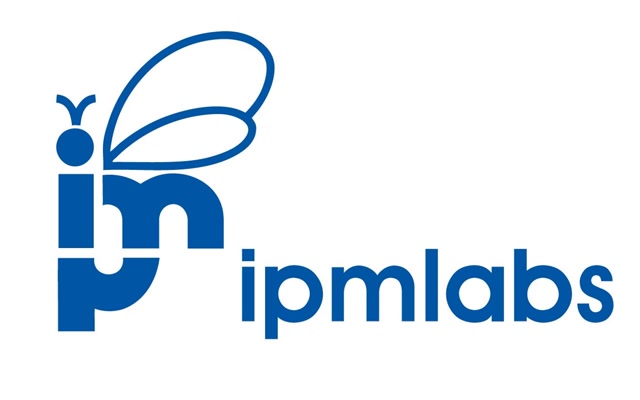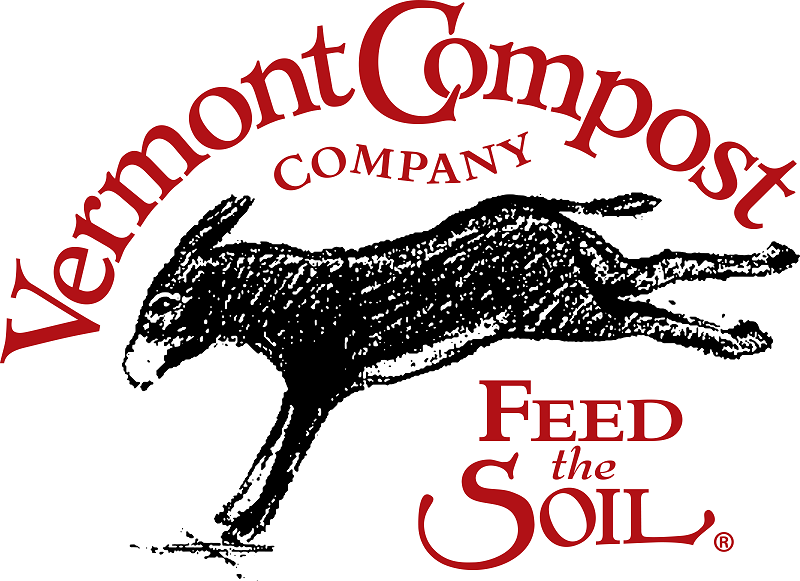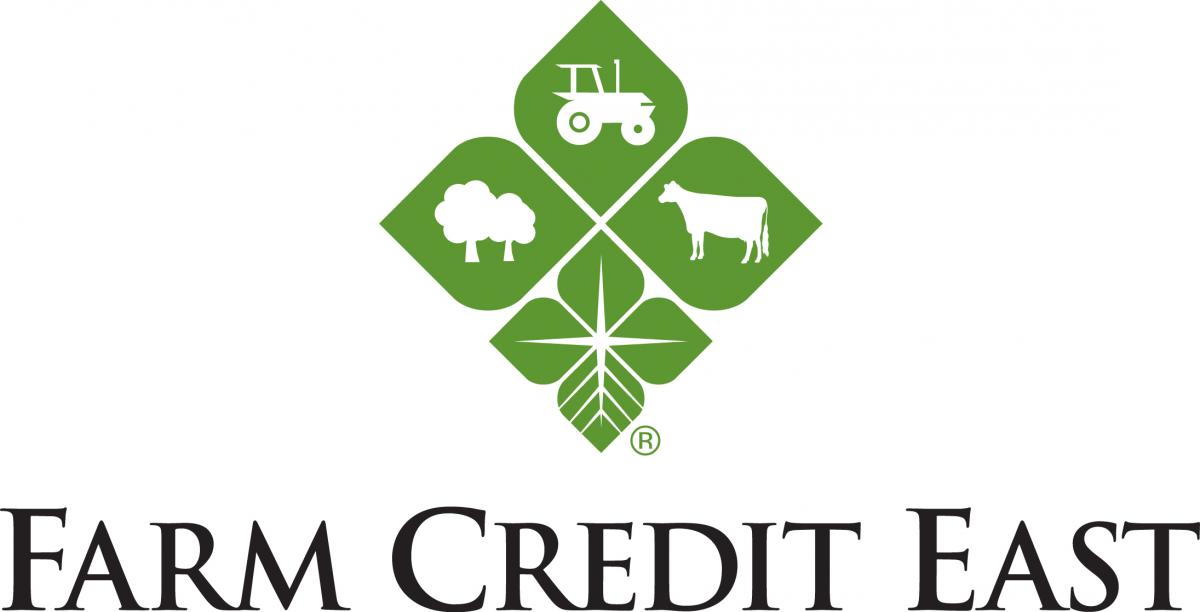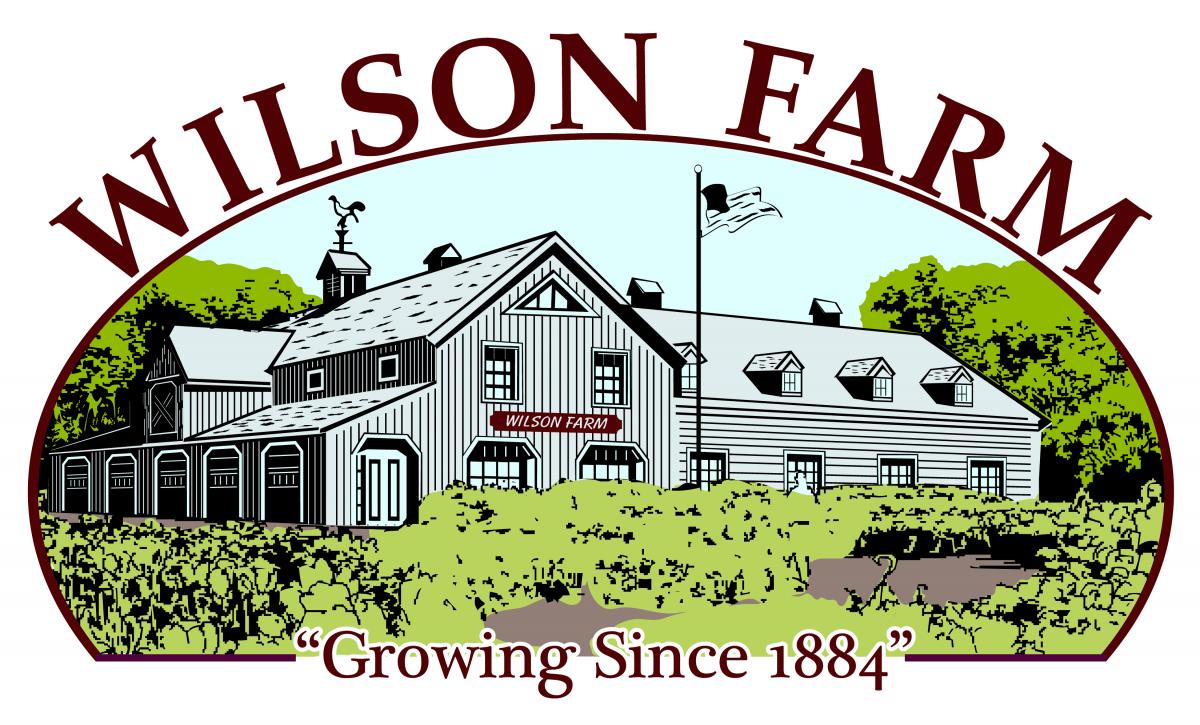To print this issue, either press CTRL/CMD + P or right click on the page and choose Print from the pop-up menu.

Crop Conditions
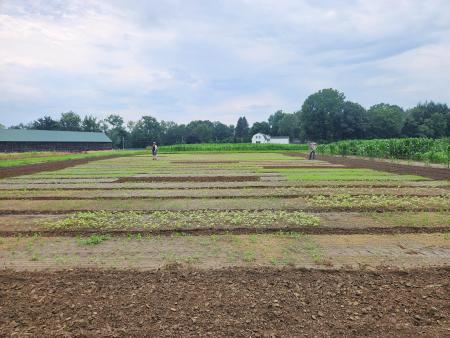 It is soggy out there, with a bit of rain but mostly just hot and muggy weather. Hot season crops are liking the heat, but foliar pathogens love the humidity and soil pathogens love waterlogged soil. We’re starting to see the usual tomato diseases—early blight and Septoria in the field and powdery mildew, leaf mold, and Botrytis in tunnels—and Phytophthora blight is developing quickly in infested fields. But despite it all early corn is coming in, squash and zucchini are going gangbusters, tomatoes are ripening, garlic is being harvested or is already curing in barns and high tunnels. Melons will be ready soon!
It is soggy out there, with a bit of rain but mostly just hot and muggy weather. Hot season crops are liking the heat, but foliar pathogens love the humidity and soil pathogens love waterlogged soil. We’re starting to see the usual tomato diseases—early blight and Septoria in the field and powdery mildew, leaf mold, and Botrytis in tunnels—and Phytophthora blight is developing quickly in infested fields. But despite it all early corn is coming in, squash and zucchini are going gangbusters, tomatoes are ripening, garlic is being harvested or is already curing in barns and high tunnels. Melons will be ready soon!
We’ll be out on Martha’s Vineyard next week at Morning Glory Farm for a field walk—we are excited to see folks from the Cape and islands and have a good discussion on pest and weed management. Click here to register so we can be sure to order enough food for after the walk!
Pest Alerts
Alliums
Onion thrips are under control in one field that we’re monitoring, after 1 application of spinosad a few weeks ago and several big rainstorms. Rain will wash thrips off of leaves, so we often see lower thrips pressure in wet years. In addition to causing silvery feeding injury on allium leaves, onion thrips' feeding wounds allow bacterial pathogens to enter leaves, which can cause bulb rots later on in storage. The threshold for insecticide application is 1-3 thrips/leaf. Organic growers should use the lower 1 thrips/leaf threshold, as OMRI-listed materials are less effective. See the appropriate crop insect control section of the New England Vegetable Management Guide for labeled materials.
Cucurbits
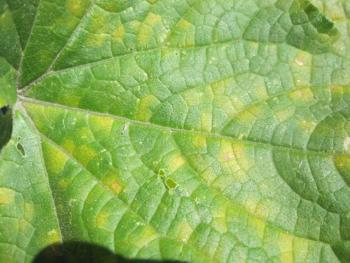 Cucurbit downy mildew has been reported in a few additional counties in western NY but has not been reported or confirmed further east. We’re likely to see CDM first on cucumber, so growers should scout for angular yellow lesions, trapped by veins, on cucumber leaves. We’ll continue including reports as the disease moves north from NJ and Long Island and east from Ontario and western NY. Growers may want to consider starting to apply protectant fungicides to cucumber and cantaloupe regularly at this point in the season. Protectant materials for CDM include chlorothalonil and copper (both effective against powdery mildew also) and mancozeb (effective against DM only).
Cucurbit downy mildew has been reported in a few additional counties in western NY but has not been reported or confirmed further east. We’re likely to see CDM first on cucumber, so growers should scout for angular yellow lesions, trapped by veins, on cucumber leaves. We’ll continue including reports as the disease moves north from NJ and Long Island and east from Ontario and western NY. Growers may want to consider starting to apply protectant fungicides to cucumber and cantaloupe regularly at this point in the season. Protectant materials for CDM include chlorothalonil and copper (both effective against powdery mildew also) and mancozeb (effective against DM only).
Squash vine borer (SVB) trap counts are slightly lower than last week—we may be at or just past the peak of the first flight. See table 1 for trap counts. SVB infest thick-stemmed cucurbits only. If plants are wilting, check the base of the plant for an entrance hole and/or piles of sawdust-like frass. Cutting open the stem will reveal a beige, legless larva. There are several diseases that can also cause cucurbit plants to wilt (e.g. bacterial wilt, Anasa wilt, Phytophthora blight) so it’s good to get a definitive diagnosis before implementing any treatment. Pesticide applications targeting SVB need to be made before larvae bore into the stem. Labeled conventional materials include Assail (neonicotinoid) and several pyrethroids (e.g. Brigade, Asana, Declare, Warrior, Mustang). For organic growers, spinosad (e.g. Entrust) and Bt (e.g. Dipel, Xentari) have demonstrated efficacy but must be ingested to be effective, making proper spray timing and coverage critical. Note that SVB is not listed on these labels but may be used in states that allow applications to the crop for other target pests. Sprays should be directed at the base of plants. Row cover will exclude moths from new plantings but need to be removed to allow for pollination during flowering.
|
Trap Location
|
SVB
|
|---|---|
|
Whately
|
5
|
| Leominster | 0 |
|
Sharon
|
36 |
|
Westhampton
|
4 |
| Spray thresholds: 5 moths/night for bush-type cucurbits, or 12 moths/night for vining cucurbits. | |
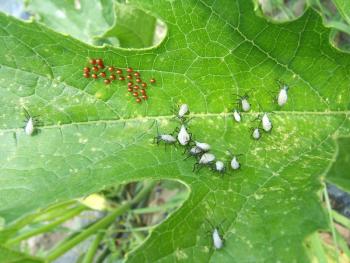 Squash bug nymphs are active now. Both adults and nymphs feed on plant sap with piercing sucking mouthparts and inject a toxin while they feed, which can cause foliage to wilt, turn black, and die—a symptom called Anasa wilt (named for the genus that squash bugs belong to). Damage is most severe on summer squash, zucchini, pumpkins, and Cucurbita maxima crops (e.g. Hubbards). Watermelon, cucumber, cantaloupe, and butternut will resist damage. Row covers will exclude squash bugs but must be removed to allow for pollination. For newly laid eggs and nymphs, consider a foliar application of acetamiprid (Assail 30 SG) which has moderate toxicity to bees (lower than other neonicotinoids). Adults and larger nymphs are more difficult to control, partly because they hide in the lower canopy and near the soil. An organic option for nymphs is a mixture of pyrethrin (a contact toxin) and azadiractin (an insect growth regulator, derived from neem). This would be gentler on bees than a high rate of pyrethrin alone and would include two modes of action. Insect growth regulators work to disrupt the molting process, so they are only useful on immature stages. Treat late in the day when the flowers are closed to reduce risk to bees. See the article in this issue for more information.
Squash bug nymphs are active now. Both adults and nymphs feed on plant sap with piercing sucking mouthparts and inject a toxin while they feed, which can cause foliage to wilt, turn black, and die—a symptom called Anasa wilt (named for the genus that squash bugs belong to). Damage is most severe on summer squash, zucchini, pumpkins, and Cucurbita maxima crops (e.g. Hubbards). Watermelon, cucumber, cantaloupe, and butternut will resist damage. Row covers will exclude squash bugs but must be removed to allow for pollination. For newly laid eggs and nymphs, consider a foliar application of acetamiprid (Assail 30 SG) which has moderate toxicity to bees (lower than other neonicotinoids). Adults and larger nymphs are more difficult to control, partly because they hide in the lower canopy and near the soil. An organic option for nymphs is a mixture of pyrethrin (a contact toxin) and azadiractin (an insect growth regulator, derived from neem). This would be gentler on bees than a high rate of pyrethrin alone and would include two modes of action. Insect growth regulators work to disrupt the molting process, so they are only useful on immature stages. Treat late in the day when the flowers are closed to reduce risk to bees. See the article in this issue for more information.
Nightshades
Late blight has been identified in 2 locations in southern Ontario—this is still a ways away from MA, but samples from one site have been identified as strain US-23, which produces much more sporangia than any other strain. Sporangia are the infective spores that are spread by wind. Strain US-23 is highly aggressive on tomato foliage and fruit and on potato tubers, and less aggressive on potato foliage. Pesticide applications targeting late blight are not recommended for MA growers at this time. Growers should scout tomatoes regularly for symptoms of late blight and report any suspected cases to us at umassveg@umass.edu or 413-577-3976. There are many other foliar diseases of tomato that can cause similar symptoms so getting an accurate diagnosis is important. See the article in this issue for more information and pictures.
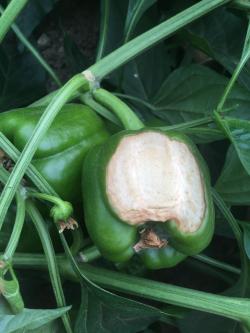 Sunscald is developing on peppers as they size up. Scalded fruit is initially white and leathery but dead tissue is often colonized by saprophytic fungi that turn the tissue black. Sunscald will be more severe on plants that have been defoliated by bacterial leaf spot or insufficient nutrients. Emmalea Ernest at University of Delaware Extension has been looking at using shade cloth in field-grown bell peppers to reduce heat damage and sunscald—see a trial report from 2022 here.
Sunscald is developing on peppers as they size up. Scalded fruit is initially white and leathery but dead tissue is often colonized by saprophytic fungi that turn the tissue black. Sunscald will be more severe on plants that have been defoliated by bacterial leaf spot or insufficient nutrients. Emmalea Ernest at University of Delaware Extension has been looking at using shade cloth in field-grown bell peppers to reduce heat damage and sunscald—see a trial report from 2022 here.
Colorado potato beetle (CPB): The second generation CPB adults are out now, but we haven’t seen any new eggs yet. As we wait for the next generation of larvae, line up your pesticide(s) for control. Do not use the same class of insecticides on this coming generation as you used on the 1st generation. See the potato or eggplant insect control section of the New England Vegetable Management Guide for labeled materials.
Sweet Corn
European corn borer (ECB) trap captures remain low, with a high of 6 moths caught this week (Table 2). We are getting near the start of the 2nd flight at 1400 GDDs, so we expect trap captures to increase again in the next few weeks.
Corn earworm (CEW) trap captures increased this week, putting several farms on a 4-day spray schedule. Researchers monitoring pyrethroid resistance in CEW are finding that resistance is slowly increasing in populations. Do not rely solely on pyrethroids for CEW management. Bt varieties that contain the vip3A gene (e.g. Attribute II, Attribute Plus) will control CEW—this pest is resistant to the other Bt genes. If we have 2 or more consecutive days above 80°F (which is likely this week), tighten spray intervals by 1 day.
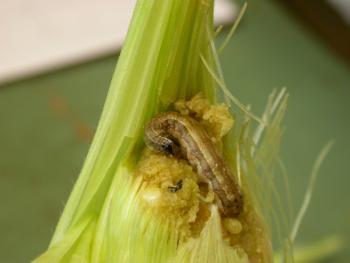
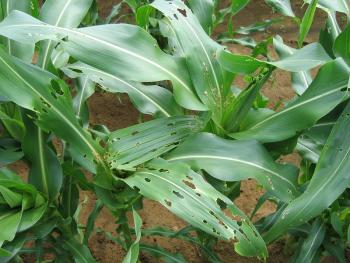 Fall armyworm (FAW): We received the first trap counts of FAW this week. FAW moths overwinter in southern states and are blown northward on storm fronts in the summer. Eggs are laid in whorl corn and the larvae cause extensive, ragged feeding damage and leave behind lots of sawdust-like frass. Insecticide applications to control corn earworm will also control FAW but if CEW trap captures are too low to warrant a spray (i.e. below 1.4 moths/week), growers should scout blocks for FAW and ECB and spray if 12-15% of plants are infested with caterpillars.
Fall armyworm (FAW): We received the first trap counts of FAW this week. FAW moths overwinter in southern states and are blown northward on storm fronts in the summer. Eggs are laid in whorl corn and the larvae cause extensive, ragged feeding damage and leave behind lots of sawdust-like frass. Insecticide applications to control corn earworm will also control FAW but if CEW trap captures are too low to warrant a spray (i.e. below 1.4 moths/week), growers should scout blocks for FAW and ECB and spray if 12-15% of plants are infested with caterpillars.
| Nearest Weather station |
GDD (Base 50°F) |
Trap Location | ECB NY | ECB IA | FAW | CEW | CEW SPRay interval |
|---|---|---|---|---|---|---|---|
| Western MA | |||||||
| North Adams | 1234 | n/a | - | - | - | - | - |
| Richmond | 1329 | n/a | - | - | - | - | - |
| South Deerfield | 1317 | Whately | 1 | 0 | - | 1.5 | 6 days |
| Chicopee Falls |
1353 |
Granby | - | - | - | - | - |
| Granville | 1145 | Southwick | 0 | 0 | 0 | 12 | 4 days |
| Central MA | |||||||
| Leominster |
1331 |
Leominster | 2 | 0 | - | 9 | 4 days |
| Lancaster | 6 | 0 | 0 | 2 | 6 days | ||
| Northbridge | 1216 | Grafton | 0 | 0 | 0 | 4 | 5 days |
| Worcester | 1212 | Spencer | 1 | 0 | 0 | 1 | no spray* |
| Eastern MA | |||||||
| Bolton | 1212 | Bolton | 1 | 0 | - | 5 | 5 days |
| Stow | 1225 | Concord | 1 | 0 | 0 | 3 | 6 days |
| Ipswich | 1200 | Ipswich | 1 | 0 | 0 | 6 | 5 days |
| Harvard | 1194 | Littleton | 1 | 0 | 0 | 1 | no spray* |
| - | - | Millis | 0 | 0 | n/a | 7 | 4 days |
| Sharon | 1174 | North Easton | 0 | 0 | 1 | 8 | 4 days |
| Sharon | 1 | 0 | - | 10 | 4 days | ||
| - | - | Sherborn | 0 | 0 | 0 | 3 | 6 days |
| Providence, RI | 1221 | Seekonk | 0 | 0 | 2 | 5 | 5 days |
| Swansea | 0 | 0 | - | - | - | ||
|
ND - no GDD data for this location - no numbers reported for this trap n/a - this site does not trap for this pest * If CEW trap captures are below 1.4 moths/week, scout block for ECB and FAW caterpillars and make a pesticide application if 12% of plants in a 50-plant sample are infested. |
|||||||
| Moths/Night | Moths/Week | Spray Interval |
|---|---|---|
| 0 - 0.2 | 0 - 1.4 | no spray |
| 0.2 - 0.5 | 1.4 - 3.5 | 6 days |
| 0.5 - 1 | 3.5 - 7 | 5 days |
| 1 - 13 | 7 - 91 | 4 days |
| Over 13 | Over 91 | 3 days |
Multiple/Miscellaneous Crops

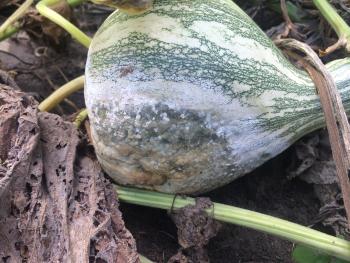 Phytophthora blight is developing in peppers and cucurbits, after the wet weather that we’ve had the last few weeks. Phytophthora capsici is a soil-borne oomycete pathogen that produces swimming spores when infested soil becomes saturated. The spores travel with water to infect host tissue in or on the ground (i.e. plant roots and crowns, and squash fruit lying on the ground). Infected pepper plants develop brown lesions starting at the base of their stems and developing upward. Leaves will wilt and fruit will rot but remain hanging on the plants. Squash plants will wilt and die back from the crown. Infected squash fruit develops soft, round lesions that expand quickly and produce white sporulation that looks like wet confectioners sugar. Symptoms usually start in low areas of fields that have had standing water or saturated soil and will spread from there. If caught early, tilling in a clean break between infected plants in a low spot and uninfected plants in a higher spot can prevent or slow the spread of Phytophthora blight. See our Managing Phytophthora Blight article for fungicide recommendations and cultural controls.
Phytophthora blight is developing in peppers and cucurbits, after the wet weather that we’ve had the last few weeks. Phytophthora capsici is a soil-borne oomycete pathogen that produces swimming spores when infested soil becomes saturated. The spores travel with water to infect host tissue in or on the ground (i.e. plant roots and crowns, and squash fruit lying on the ground). Infected pepper plants develop brown lesions starting at the base of their stems and developing upward. Leaves will wilt and fruit will rot but remain hanging on the plants. Squash plants will wilt and die back from the crown. Infected squash fruit develops soft, round lesions that expand quickly and produce white sporulation that looks like wet confectioners sugar. Symptoms usually start in low areas of fields that have had standing water or saturated soil and will spread from there. If caught early, tilling in a clean break between infected plants in a low spot and uninfected plants in a higher spot can prevent or slow the spread of Phytophthora blight. See our Managing Phytophthora Blight article for fungicide recommendations and cultural controls.
 Potato leafhopper (PLH) pressure is high in untreated fields of potato, eggplant, and beans. Adults will hop/fly away when disturbed and look like sparks flying up from the crop. Nymphs do not hop—they walk sideways on the undersides of leaves. When infestations are high, PLH feeding causes leaf margins to turn yellow then brown. This is called hopperburn. It is hard to control PLH once damage gets to this point. In potato and eggplant, some materials registered for Colorado potato beetle (CPB) adults will also control leafhopper, including neonicotinoid foliar sprays such as Admire Pro or Assail. These and several other carbamate, synthetic pyrethroid, and organophosphate products are also registered for leafhopper in potato, eggplant, and snap beans. Sivanto (flupyradifurone) is a newer product in a novel class of chemistries, the butenolides, that works against sucking pests, including PLH. It is also labeled for CPB control. See the appropriate crop insect control section of the New England Vegetable Management Guide for full lists of labeled materials. For organic growers, PyGanic (pyrethrin) is the most effective material. It is a contact insecticide that breaks down in sunlight, so getting good coverage of undersides of leaves is important and spraying late in the day may provide better control. Adding azadiractin as a tank-mix may improve efficacy when nymphs are present.
Potato leafhopper (PLH) pressure is high in untreated fields of potato, eggplant, and beans. Adults will hop/fly away when disturbed and look like sparks flying up from the crop. Nymphs do not hop—they walk sideways on the undersides of leaves. When infestations are high, PLH feeding causes leaf margins to turn yellow then brown. This is called hopperburn. It is hard to control PLH once damage gets to this point. In potato and eggplant, some materials registered for Colorado potato beetle (CPB) adults will also control leafhopper, including neonicotinoid foliar sprays such as Admire Pro or Assail. These and several other carbamate, synthetic pyrethroid, and organophosphate products are also registered for leafhopper in potato, eggplant, and snap beans. Sivanto (flupyradifurone) is a newer product in a novel class of chemistries, the butenolides, that works against sucking pests, including PLH. It is also labeled for CPB control. See the appropriate crop insect control section of the New England Vegetable Management Guide for full lists of labeled materials. For organic growers, PyGanic (pyrethrin) is the most effective material. It is a contact insecticide that breaks down in sunlight, so getting good coverage of undersides of leaves is important and spraying late in the day may provide better control. Adding azadiractin as a tank-mix may improve efficacy when nymphs are present.
Contact Us
Contact the UMass Extension Vegetable Program with your farm-related questions, any time of the year. We always do our best to respond to all inquiries.
Vegetable Program: 413-577-3976, umassveg@umass.edu
Staff Directory: https://ag.umass.edu/vegetable/faculty-staff
Home Gardeners: Please contact the UMass GreenInfo Help Line with home gardening and homesteading questions, at greeninfo@umext.umass.edu.
Squash Bugs Out Now
Squash bugs are a perennial problem in cucurbit crops, causing leaf dieback, Anasa wilt, and physical damage to squash fruit. Nymphs are emerging now, so it’s a good time to start including them in your pest management plan or taking note of their presence and making a plan for next year.
Life stages and identification

 Squash bugs are a type of true bug, a group that also includes other pests like the native brown stink bug and brown marmorated stink bug, as well as beneficial insects like the spined soldier bug. Adults are 0.5-0.75 inches long, flattened, and grayish-brown, and can be differentiated from stink bugs and spined soldier bugs by their more elongated body shape and rounded shoulders. The edge of the abdomen is marked with alternating gold and brown patches. Adults frequently take shelter beneath debris in the field at night, and it’s common to see many bugs congregated beneath a squash fruit in the field. Adults are long-lived and lay eggs over several weeks. A single female can lay up to 250 yellow- to bronze-colored eggs, usually in an orderly cluster in the junction of leaf veins on the underside of leaves, which hatch in 7-10 days in summer conditions. Nymphs are wingless and usually found in groups. They are light green when small, with a dark-colored head and legs, but become darker gray and more solitary as they grow and molt through 5 nymphal stages. There is one generation per year in the Northeast, and the complete life cycle requires 6-8 weeks.
Squash bugs are a type of true bug, a group that also includes other pests like the native brown stink bug and brown marmorated stink bug, as well as beneficial insects like the spined soldier bug. Adults are 0.5-0.75 inches long, flattened, and grayish-brown, and can be differentiated from stink bugs and spined soldier bugs by their more elongated body shape and rounded shoulders. The edge of the abdomen is marked with alternating gold and brown patches. Adults frequently take shelter beneath debris in the field at night, and it’s common to see many bugs congregated beneath a squash fruit in the field. Adults are long-lived and lay eggs over several weeks. A single female can lay up to 250 yellow- to bronze-colored eggs, usually in an orderly cluster in the junction of leaf veins on the underside of leaves, which hatch in 7-10 days in summer conditions. Nymphs are wingless and usually found in groups. They are light green when small, with a dark-colored head and legs, but become darker gray and more solitary as they grow and molt through 5 nymphal stages. There is one generation per year in the Northeast, and the complete life cycle requires 6-8 weeks.
Host crops and damage
The most susceptible and attractive crops are yellow summer squash, zucchini, and pumpkin (Cucurbita pepo) as well as C. maxima crops (e.g. Hubbard squash). Watermelon, cucumber, muskmelon, and butternut resist damage and provide poor food quality for adults and nymphs. Resistant varieties also include sweet cheese pumpkins (C. moshata) and royal acorn squash (C. pepo). Both adults and nymphs feed by sucking sap from plant tissue using their beak-like mouthparts. Adult feeding on seedlings can cause wilting of the whole plant. Places on the leaves where the bugs feed develop small, yellow specks that eventually turn brown due to a toxin released by the bug during feeding. High densities and intensive feeding cause foliage to wilt, turn black and die in a condition known as “Anasa wilt”. Squash bugs also feed on the fruit, causing scarring that can make the fruit unmarketable.
Squash bugs may also vector the bacterium Serratia marcescens, which causes the disease yellow vine decline. This disease is reported intermittently in New England; it is not thought to be widespread, but it was found in MA in 2003 and was again confirmed from one site in CT in 2020. The bacterium is introduced into a cucurbit plant by squash bug mouthparts and enters the plant’s phloem sap. Symptoms of yellow vine decline include a general yellowing of the entire vine within a two- to three-day period. Infected plants usually collapse completely approximately 10 to 14 days before the fruit matures. Plants infested with squash vine borer can display similar symptoms—leaf yellowing, wilt, lack of vigor—but will have an entry hole in the stem where the borer entered, usually accompanied by lots of sawdust-like frass. If you are seeing symptoms that you suspect could be yellow vine decline in your cucurbit crops, let us know at umassveg@umass.edu or (413) 577-3976.
Cultural Control
 If possible, rotate cucurbit crops between fields as far apart as possible. Placing row covers over the young crop prevents adult access until blooming, when covers must be removed. Natural enemies of the squash bug include the tachinid fly Trichopoda pennipes which is a parasitoid that attacks nymphs and adults, and several wasps that parasitize eggs (Hymenoptera: Encyrtidae and Scelionidae). Squash bugs like sheltered hiding places, so keep field edges mowed and free of debris to reduce overwintering sites. Plastic and straw mulch and reduced tillage systems encourage higher populations, probably by providing good hiding places. In small plantings, boards can be used to attract adults seeking a protected hiding place; check in the morning or evening and spray with insecticide or capture and squish. Remove crop residues and/or till field immediately after harvest to kill adults before they move to field edges seeking shelter. Research has shown that squash bugs are highly attracted to Blue Hubbard squash, which can be used effectively as a trap crop planted earlier in the season along field edges. The trap crop must receive an insecticide application or be mechanically destroyed before eggs hatch.
If possible, rotate cucurbit crops between fields as far apart as possible. Placing row covers over the young crop prevents adult access until blooming, when covers must be removed. Natural enemies of the squash bug include the tachinid fly Trichopoda pennipes which is a parasitoid that attacks nymphs and adults, and several wasps that parasitize eggs (Hymenoptera: Encyrtidae and Scelionidae). Squash bugs like sheltered hiding places, so keep field edges mowed and free of debris to reduce overwintering sites. Plastic and straw mulch and reduced tillage systems encourage higher populations, probably by providing good hiding places. In small plantings, boards can be used to attract adults seeking a protected hiding place; check in the morning or evening and spray with insecticide or capture and squish. Remove crop residues and/or till field immediately after harvest to kill adults before they move to field edges seeking shelter. Research has shown that squash bugs are highly attracted to Blue Hubbard squash, which can be used effectively as a trap crop planted earlier in the season along field edges. The trap crop must receive an insecticide application or be mechanically destroyed before eggs hatch.
Scouting and Chemical Control
Scout plants from seedling to vining/flowering stage to detect adults as well as eggs and nymphs. After flowering, thresholds are based on egg masses and young nymphs, but also note adults and large nymphs while scouting.
There are two key windows for control:
- Target adults on young plants (before flowering or vining). An insecticide application made when adults are colonizing plants in June will prevent subsequent egg and larval populations. Coverage is easier at this time, and broad-spectrum pyrethroids (e.g. bifenthrin, lambda-cyhalothrin, permethrin) or carbaryl, which are reported to be effective on adults at this stage, can be used without risk to bees on the crop. OMRI-approved pyrethrin products are available (e.g. PyGanic). The threshold for targeting adults has been determined for watermelon crops at an average of 1 adult per plant (Dogramaci et al. 2006), but in more susceptible crops such as summer squash and zucchini, it might be appropriate to use a lower threshold (e.g. 1 adult per 2 or more plants). Aim for coverage of underside of leaves and stems where bugs hide. Systemic furrow, drip, or seed treatments and sprays for cucumber beetle at the seedling stage may also control colonizing squash bug adults.
- Target smaller nymphs on flowering plants. Scout for egg masses and note the first emergence of nymphs. The threshold is reached at an average of 1 egg mass per plant and when the first nymphs are seen. Good coverage of undersides of leaves is needed. For newly laid eggs and nymphs, consider a foliar application of acetamiprid (Assail 30 SG) which has moderate toxicity to bees (lower than other neonicotinoids). Adults and larger nymphs are more difficult to control, partly because they hide in the lower canopy and near the soil. An organic option for nymphs is a mixture of pyrethrin (a contact toxin) and azadiractin (an insect growth regulator, derived from neem). This would be gentler on bees than a high rate of pyrethrin alone and would include two modes of action. Insect growth regulators work to disrupt the molting process, so they are useful only on immature stages. Treat late in the day when the flowers are closed to reduce risk to bees.
Take note of re-entry and pre-harvest intervals of materials used on summer squash and zucchini that are being harvested frequently.
For more information on rates and products for squash bug control, see the Cucumber, Muskmelon, and Watermelon insect section and the Pumpkin, Squash, and Gourds insect section of the New England Vegetable Management Guide.
--UMass Vegetable Program
Fungal Leaf Diseases of Tomato
All the recent rain has made for perfect conditions for the spread of plant diseases and made it hard to get into fields to spray protectant fungicides. Even in drier weather, the lush canopies of tomato plantings make great environments for moisture-loving fungal pathogens. Most of the diseases caused by these pathogens can occur in both field and high tunnel tomatoes, but Botrytis, leaf mold, and powdery mildew are most commonly seen in high tunnels and Septoria and early blight are most commonly seen in the field. Late blight is often perceived as the scariest tomato disease because of its ability to rapidly wipe out a crop; however, the other diseases outlined below, which we see every year without fail, routinely have significant effects on fruit quality and yield.
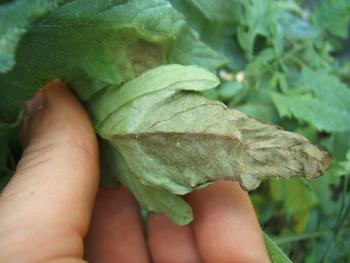 The last time late blight was confirmed in Massachusetts was in 2017. We haven’t had any reports yet in MA this year, though with cases recently confirmed in Ontario and Western NY, there is some chance this streak could be broken this season. Stay tuned to Pest Alerts or check this outbreak map for updates (Note: this map does not include reports from Canada). Unlike the other tomato pathogens discussed below, the late blight pathogen, Phytophthora infestans, does not overwinter on tomato residue in the Northeast but instead relies on storms to carry infectious spores to susceptible hosts during favorable conditions for the disease.
The last time late blight was confirmed in Massachusetts was in 2017. We haven’t had any reports yet in MA this year, though with cases recently confirmed in Ontario and Western NY, there is some chance this streak could be broken this season. Stay tuned to Pest Alerts or check this outbreak map for updates (Note: this map does not include reports from Canada). Unlike the other tomato pathogens discussed below, the late blight pathogen, Phytophthora infestans, does not overwinter on tomato residue in the Northeast but instead relies on storms to carry infectious spores to susceptible hosts during favorable conditions for the disease.
These are some other key characteristics of late blight that can help you distinguish them from symptoms of the other diseases included in this article:
- Leaf lesions are dark-green to gray, and appear water-soaked or greasy.
- No leaf yellowing occurs.
- Stem lesions are brown and can occur anywhere on stems or petioles.
- White sporulation may be seen within or on the edges of lesions on leaves or stems.
- Lesions can occur anywhere on the leaf and anywhere on the plant, meaning that they don’t necessarily start at leaf margins or at the base of the plant but are distributed throughout the canopy.
The common fungal foliar diseases of tomato are similar in that they all thrive in hot, humid weather and once established, are spread by wind, splashing water, insects, workers, and equipment. Most also survive in infested crop residue or in the soil. It’s common to see multiple of these diseases on a single plant. Management practices are similar for all of these diseases, but it is still helpful to know what diseases you are seeing in your crop so you know where it is coming from and how to stop its spread. It’s especially important to identify what diseases you have if you plan to control them using resistant varieties. For help with tomato disease identification, you can send us photos at umassveg@umass.edu, or submit samples to the UMass Plant Diagnostic Lab.
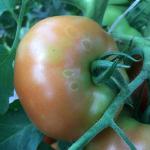
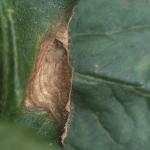
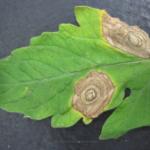 Click on photos to enlarge.
Click on photos to enlarge.
Botrytis gray mold & ghost spot (Botrytis cinerea): This pathogen causes leaf spots, stem cankers, fruit rot, and ghost spot on fruit. The pathogen thrives in humid greenhouse conditions, but it has been observed in field tomatoes when humidity is very high. Leaf lesions are dark gray and have no yellow halo, and therefore are often mistaken for late blight lesions. Under conditions of alternating heat and humidity, like in a high tunnel, the pathogen grows in such a way as to form concentric rings, and for this reason can also be confused with early blight. The way to distinguish Botrytis from early blight is by its characteristic fuzzy, brownish-gray sporulation. If you hold the leaf up and look across the lesion horizontally, you will see fine mycelia sticking up with little tuftlets on the ends that resemble grape clusters. B. cinerea primarily feeds on dead tissue and is only weakly pathogenic, therefore, you will likely see this sporulation on senescing tissue including flowers, pruning scars, or leaf tips and margins where nutritional disorders have caused tip dieback. Spores that land on fruit cause ghost spot, which appears as pale white haloes or ring spots on the green fruit. On ripe fruit, the ringspots may be yellow. Ghost spot develops when the fungus initiates infection, but disease progress is stopped by dry environmental conditions. This spotting may make fruit unmarketable. Under more humid conditions, ghost spot may lead to fruit rot. B. cinerea has a wide host range, including lettuce and other common winter tunnel crops, and can survive on dead plant tissue for long periods of time. It overwinters as mycelium in crop residues and sometimes as sclerotia in the soil.
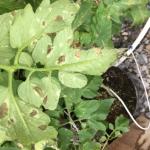
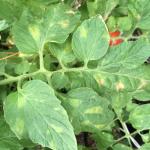 Leaf mold (Passalora fulva, previously Fulvia fulva): This disease is quite common in tunnels and greenhouses, in both soilless and hydroponic systems. Leaf mold infections begin on older leaves and cause pale-green to yellow spots visible on the upper leaf surface, with olive-green to grayish-brown fuzzy sporulation on the underside of the leaf. Heavily infected leaves turn yellow, then brown, and may wither and drop. Occasionally petioles, stems, and fruit may be affected. Infected flowers wither without setting fruit and infected fruit has leathery, black, irregularly shaped lesions. The fungus overwinters in soil on crop residue and as sclerotia (hard, black, long-lived resting structures) and may be introduced on infested seed. The fungus can survive and reproduce between 50-95°F, with optimal infection and growth between 71-75°F.
Leaf mold (Passalora fulva, previously Fulvia fulva): This disease is quite common in tunnels and greenhouses, in both soilless and hydroponic systems. Leaf mold infections begin on older leaves and cause pale-green to yellow spots visible on the upper leaf surface, with olive-green to grayish-brown fuzzy sporulation on the underside of the leaf. Heavily infected leaves turn yellow, then brown, and may wither and drop. Occasionally petioles, stems, and fruit may be affected. Infected flowers wither without setting fruit and infected fruit has leathery, black, irregularly shaped lesions. The fungus overwinters in soil on crop residue and as sclerotia (hard, black, long-lived resting structures) and may be introduced on infested seed. The fungus can survive and reproduce between 50-95°F, with optimal infection and growth between 71-75°F.
Powdery mildew (Oidium neolycopersici) of tomato is primarily a concern in high tunnels. (Note: this is a different pathogen than the one that causes powdery mildew on cucurbits.) Infections begin as small, white, powdery, circular lesions on the upper and lower leaf surfaces that can expand and coalesce until they cover entire leaves. Unlike other powdery mildews, affected leaves may rapidly wither and die, but remain attached to the stem. There are no symptoms on fruit or stems, but loss of foliage may result in sunscald. Unlike the other pathogens in this article, O. neolycopersici does not require leaf wetness to germinate and cause disease, but it does thrive under humid conditions and a range of temperatures (50-86°F). This pathogen can be very aggressive and lead to reduced yield and poor fruit flavor if untreated.
Septoria leaf spot (Septoria lycopersici) usually occurs in the field and is one of the most destructive diseases of tomato foliage, resulting in considerable leaf drop that can cause sunscald, failure of fruit to mature properly, and reduced yields. Once infections begin, the disease can spread rapidly from lower leaves to the upper canopy. Symptoms consist of small, circular, tan-to-grey lesions with dark brown margins that appear on lower leaves first, after the first fruit set. Lesions usually have yellow halos and as the lesions coalesce, significant leaf yellowing can occur. S. lycopersici forms pycnidia (structures that produce asexual spores) in the center of expanding lesions, which can be seen with a 10X hand lens as tiny black dots. The presence of pycnidia, plus the generally smaller size of the lesions and the absence of target-like circular bands within the lesion, distinguish this disease from early blight. The pathogen overwinters on infected tomato debris or infected solanaceous weed hosts (jimsonweed, horsenettle, groundcherry, and black nightshade), and can also survive on stakes and other equipment. The pathogen can also be seed-borne.
Early blight (Alternaria solani) occurs on the foliage, stem, and fruit of tomato, as well as on potato foliage and tubers. In tomato, the disease first appears as small brown to black lesions with yellow haloes on older foliage. Under conducive conditions, numerous lesions may occur on each leaf causing entire leaves to turn yellow. As the lesions enlarge, they often develop concentric rings giving them a bull’s eye or target-spot appearance. As the disease progresses, plants can become defoliated, reducing both fruit quantity and quality. Fruit can become infected either in the green or ripe stage. Infections usually occur through the stem attachment. Fruit lesions appear leathery and may have the same characteristic concentric rings as the foliage. Fruit lesions can become quite large, encompassing the whole fruit. The fungus overwinters on infected crop debris in the soil and can survive there for several years.
Stemphylium or gray leaf spot can be caused by several different species of the genus Stemphylium. This is a new disease of tomato in the Northeast—we first saw it in MA in 2020—but is common in southern states. Over the last few years, it’s been reported in both field and high tunnel tomatoes throughout the region. Stemphylium leaf spots are tan to gray and irregularly shaped, with no yellow halo. Sparse gray sporulation is sometimes visible at the center of the spots with a 10X hand lens. Lesions occur on upper and lower leaves simultaneously, distinguishing this disease from early blight and Septoria that often start on lower leaves and move upwards as the diseases progress. Similar to early blight and Septoria, Stemphylium spores are dispersed by wind and splashing water, and the fungus can survive on crop residue in the soil as well as on seeds.
Management
- Choose resistant varieties. This is especially effective for leaf mold management. There are also varieties that are resistant to early blight and Stemphylium. Most varieties are susceptible to Septoria leaf spot. You can find a list of resistant tomato varieties here.
- Dial in your nutrient applications, to avoid both deficiencies and excesses. Excessive nitrogen fertilization will lead to lush foliar growth, thus increasing humidity and a more favorable environment for disease development. Nutrient deficiencies can cause leaf tip dieback, providing senescent tissue for Botrytis infection. Lower leaves also become more susceptible to early blight as crop nutrient demand increases with fruit production and nitrogen is pulled from older leaves. See the field tomato and high tunnel tomato sections of the New England Vegetable Management Guide for nutrient recommendations.
- Destroy all diseased plant residue. In the field, till under crop debris promptly. In tunnels, removing diseased plant residue is ideal, if possible. Disinfest the entire greenhouse after pruning and harvest. See our Cleaning & Disinfecting the Greenhouse article for more information.
- Reduce humidity within the canopy by improving air circulation, controlling weeds, using wider plant spacing, removing suckers, pruning lower leaves, and watering early in the day or using drip irrigation. Avoid working in fields or tunnels when foliage is wet. In high tunnels, improve horizontal airflow with fans, and reduce humidity by a combination of heating and venting in the evening, particularly when warm days are followed by cool nights.
- Control solanaceous weeds.
- Practice a 2-year crop rotation out of tomatoes. This might not be possible in high tunnels but should be practiced for field tomatoes.
- Apply protectant fungicides. Start chemical control before or as soon as symptoms first develop, and apply at regular intervals. See the field tomato and high tunnel tomato disease control sections of the Guide for current chemical control recommendations. Always alternate fungicide applications between materials with different modes of action to prevent resistance development. For greenhouse and high tunnel crops, check labels to ensure that indoor use is not prohibited. If a label does not explicitly prohibit indoor use, a product may be applied in tunnels and greenhouses. Michigan State University has a spreadsheet that compiles indoor use allowances of pesticides, available here; but you should always check the label yourself as well! Find current pesticide labels at cdms.net.
Stemphylium leaf spot is not currently included in the New England Vegetable Management Guide, and fewer fungicides are labeled specifically for this disease than for early blight and Septoria. In MA, fungicides can legally be used if the target crop and use pattern (e.g. foliar sprays) are both on the label—fungicides that are effective against early blight and Septoria should also be effective against Stemphylium. Chlorothalonil, mancozeb, Aprovia Top, Inspire Super, Luna Tranquility, ManKocide, Gavel, Revus Top, Mettle, Flint are labeled specifically for Stemphylium/gray leaf spot.
--Written by Bess Dicklow, retired UMass Extension Plant Diagnostician, and Susan B. Scheufele, UMass Extension Vegetable Program
Short-Term Summer Cover Crops
As harvests continue and space is freed up in fields, consider planting a cover crop to fill gaps for short periods. There are several good legume and non-legume cover crop choices for planting now and throughout July that grow rapidly in the summer heat. When planting mixtures in the summer, select equally vigorous crops (similar height and growth rate) so they will not compete and shade each other out. For example, Jean-Paul Cortens of Roxbury Farm in Kinderhook, NY likes a mix of 50 lbs/A sunn hemp, 10 lbs/A Japanese millet, 5 lbs/A sunflower, and 50 lbs/A cowpea or field pea.
Legumes
- Cowpea (Vigna unguiculata), also known as black-eyed or southern pea, is fast-growing with peak biomass often reached in 60 days. It also tolerates drought and heat. Cowpeas can fix up to 100 lbs N/A with biomass of 3000-4000 lbs/A. It breaks down rapidly after incorporation. Cowpeas also can be harvested in the immature pod stage as a fresh legume. Drill at 40-50 lbs/A and broadcast at 70-100 lbs/A.
- Sunn hemp (Crotalaria juncea) is a tropical legume (not related to other hemps) and has great potential in our humid, tropic-feeling summers. Sunn hemp can produce a lot of biomass (3-4 tons/A in MA). It is a high nitrogen-fixing legume and can contribute over 100 lbs N/A to a following crop. Sunn hemp grows very fast in the summer, reaching 6 feet or taller in 8 weeks. Allow sunn hemp to grow 1-3 feet tall, then mow it and let it regrow. If allowed to get too tall, the stems will become tough and fibrous and will not decompose rapidly. This crop is an excellent companion for sorghum sudangrass, which can also be mowed to keep it from getting too fibrous. Sunn hemp is a day length-sensitive crop; it will grow anytime during the summer, however it will not flower and go to seed until the days start getting shorter in very late summer. Drill 20-30 lbs/A.
- Crimson clover (Trifolium incarnatum) is a beautiful cover crop that is a great choice for a short-term summer cover or perhaps seeded between plastic rows to reduce splash and erosion and suppress weeds. Historically it was not considered an overwintering cover crop in Massachusetts, but in UMass Extension cover crop research trials, it has overwintered well in the last decade. It is fairly resilient and tolerates well-drained soils, heat, drought, and low fertility soils. Shade tolerance makes this cover crop a good choice for mixes, but it can still struggle to compete against very vigorous cover crops like sorghums and buckwheat. Depending on coverage, it can fix 70-150 lbs N/A. Drill 10-20 lbs/A, and broadcast at 12-24 lbs/A.
Non-Legumes
- Sorghum sudangrass (Sorghum bicolor x S. sudanense) is a cross between grain sorghum and sudangrass. It is a warm-season annual grass that grows well in hot conditions and produces a large amount of biomass. Its thick root system and high biomass makes it useful for soil building. Sorghum sudangrass can reach 6-12 feet tall, but should be mowed when it reaches 2-3 feet tall to prevent it from becoming fibrous and difficult to manage. Mowing also encourages root growth. Unmowed sorghum sudangrass will winterkill but the tough residue can be difficult to manage in the spring. Brown midrib types will decompose more quickly because they have less lignin. Expect 3-4 tons of biomass addition per acre in MA. Because it is a grass, to get the most growth you will need to add nitrogen fertilizer (40-80 lbs/A), which will be cycled on to the next crop. Sorghum sudangrass is very effective at suppressing weeds and has been shown to have allelopathic and biofumigant properties useful for nematode management. Drill 35-40 lbs/A or 40-50 lbs/A broadcast.
- Phacelia (Phacelia tanacetifolia), also known as blue or purple tansy, is a good cover crop for use in rotation on vegetable farms because it is not in the same family as any major vegetable crops. This fast-growing cover crop is best to seed in mid-summer. While it does not have a deep taproot, phacelia is a wonderful soil aggregator in the top 2 inches. Beneficial insects including parasitoids and pollinators are attracted to the fuzzy purple-blue flowers. This cover crop will winterkill at 15°F. Seed at 1 lb/A drilled and 3 lb/A broadcast.
- Pearl millet (Pennisetum glaucum) or Japanese millet (Echinochloa spp.) have similar functions as summer cover crops: they grow rapidly but are easier to manage than sorghum sudangrass. They also produce less biomass than sorghum sudangrass. Both millets grow about 4-6 feet tall and have similar seeding rates. They are well-adapted to sandy and/or infertile soils and do well in the summer heat. Forage types are better adapted for soil improvement than grain types. To get the most growth, you will need to add nitrogen fertilizer (40-80 lbs/A). Pearl millet has been shown to suppress some nematodes. Forage pearl millet can make a good mulch for late-summer plantings of no-till or strip-till crops. Seed at 12-15 lbs/A drilled or 15-20 lbs/A broadcast.
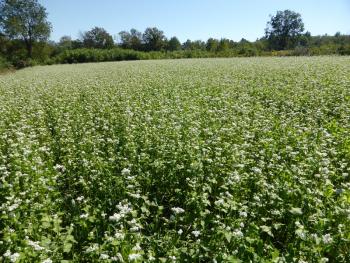 Buckwheat (Fagopyrum esculentum) is a great choice if weed suppression is your main goal. It can be sown as early as May 20, but will put on more growth if seeded after June 1st. As a broadleaf plant, it covers the ground earlier than grass cover crops, and out-competes weeds. A good stand of buckwheat attracts beneficial insects, improves soil tilth, and produces more biomass than any other cover crop in the short time it grows, but doesn’t do well if the plow layer is compacted. It scavenges phosphorus from the soil and makes it available to subsequent crops. Buckwheat does well even in low nitrogen or low phosphorous soils, without additional fertilizer. Buckwheat decomposes quickly after incorporation. Mow or incorporate when the planting begins flowering to avoid seed production and volunteers. Drill at 50 lbs/A or broadcast at 70 lbs/A.
Buckwheat (Fagopyrum esculentum) is a great choice if weed suppression is your main goal. It can be sown as early as May 20, but will put on more growth if seeded after June 1st. As a broadleaf plant, it covers the ground earlier than grass cover crops, and out-competes weeds. A good stand of buckwheat attracts beneficial insects, improves soil tilth, and produces more biomass than any other cover crop in the short time it grows, but doesn’t do well if the plow layer is compacted. It scavenges phosphorus from the soil and makes it available to subsequent crops. Buckwheat does well even in low nitrogen or low phosphorous soils, without additional fertilizer. Buckwheat decomposes quickly after incorporation. Mow or incorporate when the planting begins flowering to avoid seed production and volunteers. Drill at 50 lbs/A or broadcast at 70 lbs/A.
Additional Information
- Summer Soil Improving Crops for Vegetable Rotations, Gordon Johnson, Extension Vegetable and Fruit Specialist, University of Delaware.
- Cover Crop Guide for New York Vegetable Growers. From Cornell Cooperative Extension. This site includes cover crop profiles as well as a cover crop decision tool, where you can get crop recommendations based on your management goal, planting time, and cover crop duration.
- Cover Crops: What a Difference a Few Weeks Makes! Results from Cornell Organic Cropping Systems Trials.
- Cover Crop Periodic Table
Produce Safety Update
FSMA Water Rule and the Massachusetts Commonwealth Quality Program (CQP)
A reminder that the rules relating to preharvest water quality under the FSMA Produce Safety Rule have changed. For anyone who attended a Produce Safety Alliance Grower Training in the past, this means that what you learned in that course about the requirements for water testing of preharvest water is no longer accurate. While the Rule still requires growers to assess whether water is “safe and of adequate sanitary quality for its intended use”, it now requires them to complete an annual Written Water Assessment, rather than relying on a series of water tests to assess risks from preharvest agricultural water.
The FDA developed an Assessment Builder tool to help growers create their required document. It involves answering a series of questions and filling in text about each water source. You get a summary of your answers at the end to include in your records and guide your determination about whether corrective or mitigation measures are necessary to reduce the risk of produce contamination.
Compliance dates for the new Rule are:
- Largest businesses (annual gross >$500K)-----------April 7, 2025
- Small businesses (annual gross >$250K-$500K)------April 6, 2026
- Very small businesses (annual gross >$25K-$250K)---April 5, 2027
Note that some water testing is still required if you use ground/well water for any postharvest uses (e.g., washing of produce, food contact surfaces, or hands) – 4x per year for the first year and 1x per year thereafter, as long as tests remain negative for generic E. coli.
The Rule also requires an annual inspection of your entire water system, which is different than the water assessment.
Growers participating in CQP must continue to do some testing of both preharvest and postharvest water. Growers in CQP must have records of required water tests in order to be eligible for a certificate. See here for a Summary of Current Ag Water Requirements in MA.
NECAFS introduces new interactive tool for assessing risks from wildlife contamination
The Assessing Wildlife and Animal Contamination tool:
- provides a simple and accessible method of prioritizing changes to improve food safety specifically related to animal intrusion, fecal contamination, and other factors that influence the spread of that contamination, and
- calculates the easiest to implement changes with the greatest food safety impact and identifies those practices for action first.
To do this, the tool provides:
- science-based survey questions focused on distilled aspects of wildlife and animal contamination,
- curated science-based recommendations based on survey answers,
- cited resources for further investigation, and
- figures and tables for easier comprehension of food safety concepts and recommendations.
This tool can be used:
- as an educational tool in conjunction with food safety trainings,
- as an educational tool with one-on-one educator aid to growers,
- at the start of a growing season when growers are planning and developing an animal intrusion and contamination standard operating procedures (SOPs),
- when there is a change in animal activity on adjacent land or within an operation, and
- on an annual basis since the recommendations will adjust based on changes made on the farm over the previous year.
Direct link: https://dst.necafs.org/animal
Food Safety Clearinghouse Page: https://foodsafetyclearinghouse.org/resources/assessing-wildlife-and-animal-contamination-decision-support-tool-grower-adoption-food
FDA Updates Food Traceability Resources
Routine inspections for growers needing to comply with the new FSMA Traceability Rule won’t begin until 2027, giving affected parties time to get their systems in place. Additional records, which may include an electronic sortable spreadsheet, are required for foods on the Food Traceability List, which includes fresh, uncut:
- Cucumbers
- Herbs
- Leafy greens
- Melons
- Peppers
- Tomatoes
The list also includes fresh-cut fruits and vegetables as well as shell eggs, nut butters, and some cheeses and fish.
A downloadable spreadsheet template can be found here.
There are exemptions for some produce farms:
Summary Chart of Exemptions from the Traceability Rule for Produce Farms
A training curriculum for the Traceability Rule is being developed and is anticipated to be available by mid-2025.
If you have questions about produce safety or the Produce Safety Rule reach out to Lisa McKeag at lmckeag@umass.edu or 413-658-8631.
News
New MDAR Service: Farm Transfer Plan Assistance or Farm-Pass
MDAR’s new Farm-Pass Program will provide direct assistance to help Massachusetts farm owners pass their farm on to the next generation. This service is targeted to owners who have already identified a successor – either within the family or not – who is interested in transitioning to own and manage a commercial farm business on the farm property in the near future. This is a no-cost opportunity for farm owners, family members, and the identified successor to work one-on-one with an experienced, dedicated planner to create a customized farm transfer plan. Participants will meet regularly to set goals for retirement and the future farm business, and create tangible next steps to transfer assets and management.
MDAR's Farm Transfer Plan assistance program will match participants with a professional planner with experience working with farms on business management, financials, and farm transfer to meet regularly over the course of approximately one year. The planners will NOT provide legal or tax advice but WILL help you develop a written action plan that identifies concrete next steps to work on with your attorney and/or CPA/tax advisor to make the transfer happen.
Three rounds of this program are anticipated under this RFR. Applications will be accepted on a rolling basis, but must be received by the following dates in order to be considered for each round’s start date as follows:
- To start by August 30, 2024, applications must be received by July 15, 2024.
- To start by March 1, 2025, applications must be received by January 15, 2025
- To start by June 1, 2025, applications must be received by April 15, 2025
CLICK HERE to apply. The PDF titled “AGR-FTPA-FY25-26” is the Request for Response with information and the application form.
Questions? Contact Melissa Adams, 857-276-2377, Melissa.L.Adams@mass.gov or Laura Barley, 857-507-5548, Laura.Barley@mass.gov.
39th Massachusetts Tomato Contest to be Held on August 20
The 39th Massachusetts Tomato Contest will be held at the Boston Public Market on Tuesday, August 20. Tomatoes will be judged by a panel of experts on flavor, firmness/slicing quality, exterior color and shape. Always a lively and fun event, the day is designed to increase awareness of locally grown produce.
Open to commercial farmers in Massachusetts, growers can bring tomatoes to the market between 8:45 am and 10:45 am on August 20 or drop their entries off with a registration form to one of the regional drop-off locations on Monday, August 19. Drop off locations include sites in South Deerfield, Southboro, North Easton and West Newbury. These tomatoes will be brought to Boston on Tuesday.
For complete details, including drop off locations, contest criteria, and a registration form, click here. Be sure to include the registration form with all entries.
The Massachusetts Tomato Contest is sponsored by MDAR and New England Vegetable and Berry Growers Association, in cooperation with the Boston Public Market. Please consider participating to showcase one of the season’s most anticipated crops!
Questions? Contact David Webber, David.Webber@mass.gov.
Events
Field Walk at Morning Glory Farm - Edgartown, MA
When: Wednesday, July 17, 2024, 6-8pm
Where: Morning Glory Farm, Edgartown, MA
Registration: Free! Please register in advance so we can order enough food. Click here to register.
Join UMass Extension specialists Sue Scheufele and Maria Gannett for a field walk at Morning Glory Farm. We will identify current pest and weed issues in vegetable crops and discuss their management. There will be lots of time for Q&A, discussion, and dinner and refreshments will be provided.
2 pesticide recertification credits are available for this program.
This event is co-sponsored by NOFA/Mass and Martha’s Vineyard Ag Society with support from the Transition to Organic Partnership Program.
Tillage Reduction Systems and Equipment: Living Mulch and Strip-Till at Atlas Farms - Deerfield, MA
When: Thursday, July 25, 4-6pm
Where: Atlas Farm (~1 mile south of farm office), 595A River Rd, Deerfield, MA 01342
Registration: Free! Please register in advance so we can plan for food. Click here to register.
Come check out Atlas Farms' 3-acre experiment with strip-tilled winter squash into a perennial clover living mulch, and living clover/rye pathways in 5 acres of tomatoes. We'll look at a no-till drill, strip-till equipment, and strip-cultivation equipment. Atlas' trials have implications for tillage reduction and soil health for conventional and organic growers at all scales. There will be a light dinner at 6 PM.
This event is co-sponsored by CISA, Momentum Ag, Hampshire/Hampden/Franklin County Conservation District, and UMass Extension.
Participate in Organic High Tunnel Vegetable Study
If you are growing organic vegetables in a high tunnel, we want to connect with you! The University of Minnesota and University of New Hampshire are partnering to conduct on-farm research about the performance of legume cover crops in organic high tunnel vegetable rotations in the Midwest and Northeast regions. The goal of this project is to enable organic high tunnel growers to reduce their dependence on purchased composts and manures by using nitrogen-fixing legume cover crops to support soil fertility, productivity, and sustainability.
We are currently recruiting organic high tunnel growers to receive cover crop seed and participate in the on-farm research trials, which will begin in fall 2024 for overwinter cover crops and spring 2025 for spring/summer covers. We have two levels of participation available, so you can choose the level of commitment that works for you.
Informational webinar:
When: Tuesday, July 30, 7:30pm EST
Where: Zoom
Click HERE to watch a recording at the previous information session.
Sign up to learn more about the trial at z.umn.edu/hightunnelcovercroptrial. We will send the webinar link and a calendar invitation to everyone who signs up. Hope to see you there!
Questions? Contact Becky Sideman, becky.sideman@unh.edu
Water & Climate Change Twilight Meeting at Bardwell Farm – Hatfield, MA
When: Friday, August 2, 2024, 5-7pm, with dinner and discussion to follow
Where: Bardwell Farm, 49 Main St., Hatfield, MA 01038
Registration: Free! Please register in advance so we can order enough food. Click here to register.
Join UMass Extension and CISA for a climate-themed twilight meeting at Bardwell Farm in Hatfield, MA!
- Lisa McKeag will share findings from her recent water quality survey of farms around MA and discuss potential risks and impacts of weather and climate change and rising year-round temperatures on agricultural water quality.
- Harrison Bardwell will show off his new automated irrigation system, and discuss irrigation practices and funded projects around the farm.
- Sue Scheufele will discuss increasing pest risks caused by a hotter climate on vegetable pests including an on-farm trial for managing Phytophthora blight in peppers hosted by Bardwell Farm.
1 pesticide recertification credit is available for this program.
This event is co-sponsored by CISA as part of their Adapting your Farm to Climate Change Series.
Save the Date! UMass Research Farm Field Day - South Deerfield, MA
When: August 13, 2024, time TBD
Where: UMass Crop & Livestock Research & Education Farm, 89 River Rd., South Deerfield, MA
Registration: Coming soon!
Come learn about all the research being done by students and faculty across CNS and by UMass Extension on a tour of the farm. Topics include pollinator habitat, bee health and disease ecology, novel cover cropping strategies, intercropping to reduce greenhouse gas emissions, genetic basis of flowering traits in agriculture, and vegetable variety trials including heat-resistant lettuce varieties for summer production.
Field Walk at Siena Farms - Sudbury, MA
When: Wednesday, August 21, 2024, 4-6pm
Where: Siena Farms, 113 Haynes Rd, Sudbury, MA 01776
Registration: Free! Please register in advance, for food ordering purposes. Click here to register.
Join us for a field walk at Siena Farms! Someone from the farm will discuss their sunflower production, and the UMass Extension Vegetable Program will lead a pest walk. Light dinner and refreshments will be served at the end, with plenty of time to talk with fellow growers!
1 pesticide recertification credit is available for this program.
This event is funded by a grant from the Massachusetts Department of Agriculture.
Twilight Meeting: Climate Impacts on Weed Management and Soil Health - South Deerfield, MA
When: Tuesday, October 8, 2024, 4-6pm, with a light supper to follow
Where: UMass Crop & Livestock Research & Education Farm, 89 River Rd., South Deerfield, MA, 01373
Registration: Free! Please register in advance so we can order enough food. Click here to register.
How are climate change and hotter temperatures affecting our soils? Often, practices like reducing tillage and cover cropping are recommended to improve soil health, reduce risk of topsoil loss and enhance resilience to drought and flood—practices that can also affect weed management. UMass Extension will discuss general impacts of climate change on soil health and highlight current research on updating recommendations for planting timing and overwintering survival of cover crop species in MA. Maria Gannett, UMass Extension Weeds Specialist, will relate these strategies to how they can impact weed management.
1 pesticide recertification credit is available for this program.
This event is co-sponsored by CISA as part of their Adapting your Farm to Climate Change Series.
Save the Date! Gaining Ground Farm Tour
When: Thursday, October 17, 2024, 4-6pm
Where: Gaining Ground, 341 Virginia Rd., Concord, MA 01742
Join New Entry and UMass Extension for a farm tour of Gaining Ground Farm in Concord, MA!
Registration and event details coming soon.
New England Vegetable & Fruit Conference - Registration Now Open!
When: Tuesday - Thursday, December 17-19, 2024, 8am-6pm daily
Where: Doubletree Hotel, 700 Elm St., Manchester, NH 03101
Registration: Before November 30, $115/person, or $85 for additional attendees if registering as a group. Students $50. Registration capped at 1,400. Click here to register.
The NEVF Conference includes more than 25 educational sessions over three days, covering major vegetable, berry and tree fruit crops as well as various special topics. A Farmer-to-Farmer meeting after each morning and afternoon session will bring speakers and farmers together for informal, in-depth discussions on certain issues. The extensive trade show has over 120 exhibitors.
Vegetable Notes. Maria Gannett, Genevieve Higgins, Lisa McKeag, Susan Scheufele, Alireza Shokoohi, Hannah Whitehead, co-editors. All photos in this publication are credited to the UMass Extension Vegetable Program unless otherwise noted.
Where trade names or commercial products are used, no company or product endorsement is implied or intended. Always read the label before using any pesticide. The label is the legal document for product use. Disregard any information in this newsletter if it is in conflict with the label.
The University of Massachusetts Extension is an equal opportunity provider and employer, United States Department of Agriculture cooperating. Contact your local Extension office for information on disability accommodations. Contact the State Center Directors Office if you have concerns related to discrimination, 413-545-4800.

